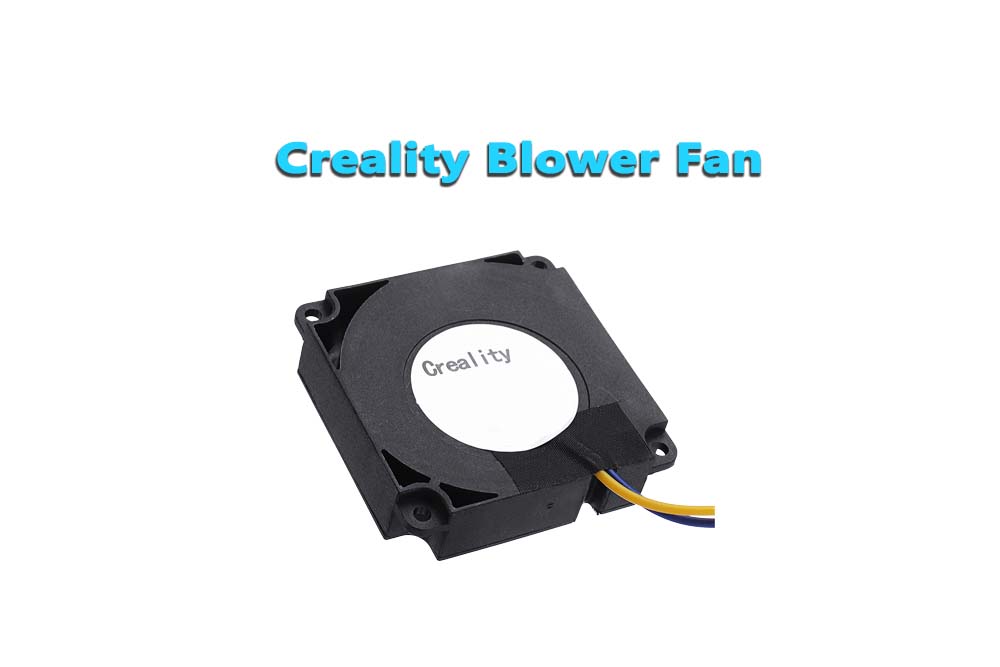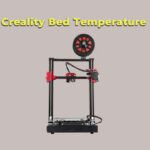What is blower fan?
A blower fan is a device that helps circulate air within a space. It is often used in conjunction with an air conditioner or heater to evenly distribute the cool or warm air throughout the room. Blower fans come in a variety of sizes and designs, and can be used for both residential and commercial applications.
Role of blower fan in Creality:
The blower fan is an important part of the 3D printer, which can cool the extruded filament and prevent deformation during cooling.
Mechanics of blower fan:
The blower fan typically consists of a housing, blades, a motor and an impeller. The housing encloses the blades and protects them from damage. The blades are attached to the motor, which spins the impeller.
The impeller draws air into the housing and forces it out through the blades. This produces a airflow that can be used to cool or circulate air within a space.

Types of bowler fan:
There are two main types of blower fans: centrifugal and axial.
Axial blower fan:
An axial blower fan has blades that are attached to a shaft that runs through the center of the housing. The air is drawn in through the sides of the housing and forced out through the blades. This produces a low-pressure airflow that is ideal for circulating air within a space.
Advantages:
The main advantage of an axial blower fan is its compact design. The small size of the unit makes it easy to install and operate. Additionally, axial blower fans are typically less expensive than other types of blower fans.
Disadvantages:
The main disadvantage of an axial blower fan is its efficiency. Due to the way they are designed, axial blower fans are not as efficient as other types of blower fans. Additionally, they can be noisy when operating at high speeds.
Centrifugal blower fan:
A centrifugal blower fan has a housing that encloses the blades and an impeller that spins inside the housing. The air is drawn into the center of the impeller and forced out through the blades. This produces a high-pressure airflow that is ideal for cooling applications.
Advantages:
The main advantage of a centrifugal blower fan is its efficiency. Centrifugal blower fans are able to move large volumes of air while consuming less energy than other types of blower fans. Additionally, they are typically more durable than other types of blower fans.
Disadvantages:
The main disadvantage of a centrifugal blower fan is its size. The larger size of the unit can make it difficult to install and operate. Additionally, centrifugal blower fans are typically more expensive than other types of blower fans.
Which type of fan is better for use?
The type of blower fan that you choose will depend on your specific needs. If you are looking for a compact and inexpensive fan, then an axial blower fan would be a good choice. However, if you are looking for an efficient and durable fan, then a centrifugal blower fan would be a better choice.
How to choose right size of blower fan?
The size of the blower fan will depend on the application. For example, a small blower fan can be used to circulate air within a space, while a larger blower fan may be required for cooling applications.
How to use blower fan?
To use a blower fan, simply place it in the desired location and turn it on. Depending on the size of the room and the amount of airflow needed, you may need to adjust the speed of the fan. For best results, consult with a professional before using a blower fan in your home or business.
How to replace the blower fan?
If your 3D printer’s blower fan needs to be replaced, follow these steps:
- Turn off the power to the printer and unplug it from the power outlet.
- Remove the screws that hold the blower fan in place.
- Disconnect the wiring harness from the blower fan.
- Install the new blower fan in the reverse order of removal.
- Reconnect the power and turn on the printer.
Some common problems of bowler fan:
- The blades of the blower fan may become bent or broken.
- The motor of the blower fan may burn out.
- The housing of the blower fan may crack or break.
How to prevent problems with your blower fan?
To prevent problems with your blower fan, follow these tips:
- Inspect the blades of the blower fan regularly and replace them if they are damaged.
- Inspect the motor of the blower fan regularly and replace it if it is damaged.
- Do not use the blower fan in an environment that is too hot or too cold.
- Do not use the blower fan in an environment that is wet or dusty.
The size of the blower fan will depend on the application. For example, a small blower fan can be used to circulate air within a space, while a larger blower fan may be required for cooling applications.
FAQ’s:
Q: What are the benefits of using a blower fan?
A: The main benefit of using a blower fan is that it can move large volumes of air while consuming less energy than other types of fans. Additionally, blower fans are typically more durable than other types of fans.
Q: What are the disadvantages of using a blower fan?
A: The main disadvantage of using a blower fan is its size. The larger size of the unit can make it difficult to install and operate. Additionally, blower fans are typically more expensive than other types of fans.
Q: How do I choose the right size blower fan for my needs?
A: The size of the blower fan will depend on the application. For example, a small blower fan can be used to circulate air within a space, while a larger blower fan may be required for cooling applications.
Q: What are some common problems with blower fans?
A: Some common problems with blower fans include bent or broken blades, burnt-out motors, and cracked or broken housings. These problems can typically be prevented by regularly inspecting the fan and replacing damaged parts.
Additionally, it is important to use the fan in an environment that is not too hot or too cold and to avoid using the fan in wet or dusty environments.

